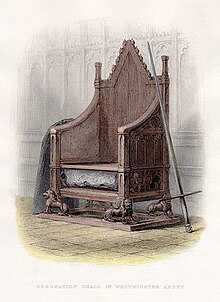
The Stone of Scone, also known as the Stone of Destiny, is an oblong block of red sandstone that was used in the coronation of Scottish monarchs until the 13th century, and thereafter in the coronation of English and later British monarchs. The Stone measures 26 by 16.7 by 10.5 inches and weighs approximately 335 lb. A cross is roughly incised on one surface, and an iron ring at each end aids with transport. Monarchs sat on the Stone of Scone itself until a wooden platform was added to the Coronation Chair in the 17th century.
The Glasgow University Scottish Nationalist Association (GUSNA) is a student organisation formed in 1927 at the University of Glasgow which supports Scottish independence.
Ian Robertson Hamilton KC was a Scottish lawyer and nationalist, best known for his part in the return of the Stone of Destiny from Westminster Abbey to Arbroath Abbey in 1950.
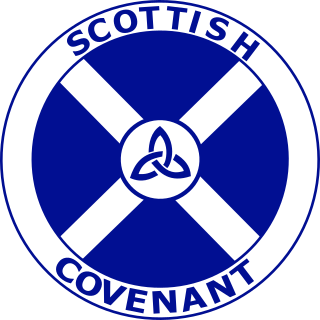
The Scottish Covenant Association was a non-partisan political organisation in Scotland in the 1940s and 1950s seeking to establish a devolved Scottish Assembly. It was formed by John MacCormick who had left the Scottish National Party in 1942 when they decided to support all-out independence for Scotland rather than devolution as had been their position.

The Coronation Chair, also known as St Edward's Chair or King Edward's Chair, is an ancient wooden chair on which British monarchs sit when they are invested with regalia and crowned at their coronations. It was commissioned in 1296 by King Edward I to contain the Stone of Scone, which he had captured from the Scots. The chair was named after Edward the Confessor and for centuries it was kept in his shrine at Westminster Abbey.

Scone Palace is a Category A-listed historic house near the village of Scone and the city of Perth, Scotland. Ancestral seat of Earls of Mansfield, built in red sandstone with a castellated roof, it is an example of the Gothic Revival style in Scotland.

The Keeper of the Great Seal of Scotland is the keeper of the Great Seal of Scotland, and one of the great officers of state in Scotland. The Keeper of the Great Seal of Scotland is the incumbent First Minister of Scotland, currently Humza Yousaf, since March 2023.

Scone Abbey was a house of Augustinian canons located in Scone, Perthshire (Gowrie), Scotland. Dates given for the establishment of Scone Priory have ranged from 1114 A.D. to 1122 A.D. However, historians have long believed that Scone was before that time the center of the early medieval Christian cult of the Culdees. Very little is known about the Culdees but it is thought that they may have been worshiping at Scone from as early as 700 A.D. Archaeological surveys taken in 2007 suggest that Scone was a site of real significance even prior to 841 A.D., when Kenneth MacAlpin brought the Stone of Destiny, Scotland's most prized relic and coronation stone, to Scone.
The Westminster Stone theory is the belief held by some historians and scholars that the stone which traditionally rests under the Coronation Chair is not the true Stone of Destiny but a 13th-century substitute. Since the chair has been located in Westminster Abbey since that time, adherents to this theory have created the title 'Westminster Stone' to avoid confusion with the 'real' stone.
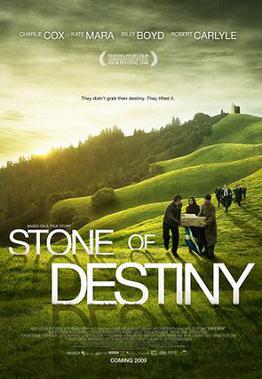
Stone of Destiny is a 2008 Scottish-Canadian historical adventure comedy film written and directed by Charles Martin Smith and starring Charlie Cox, Billy Boyd, Robert Carlyle, and Kate Mara. Based on real events, the film tells the story of the removal of the Stone of Scone from Westminster Abbey. The stone, supposedly the Stone of Jacob over which Scottish monarchs were traditionally crowned at Scone in Perthshire, was taken by King Edward I of England in 1296 and placed under the throne at Westminster Abbey in London. In 1950, a group of Scottish nationalist students succeeded in liberating it from Westminster Abbey and returning it to Scotland where it was placed symbolically at Arbroath Abbey, the site of the signing of the Declaration of Arbroath and an important site in the Scottish nationalist cause.
Matheson is a surname derived from either an anglicised form of Scottish Gaelic surnames or the patronymic form of a short form of the English Matthew. This English personal name is ultimately derived from the Biblical Hebrew מַתִּתְיָהוּ (mattiṯyāhū), which means "gift of God". An early record form of the surname Matheson is Mathyson, recorded in 1392; this recorded name literally means "son of Mathi"—Mathi being a pet form of Matthew. Two different Scottish Gaelic surnames have been Anglicised Matheson. One such surname is Mac Mhathghamhuin, which became Anglicised Matheson on account of its similar sound. This Gaelic surname is of an entirely different etymology than Matheson, as the Gaelic mathghamhuin means "bear". Another Gaelic surname Anglicised Matheson is Mac Matha. This Gaelic surname is derived from the patronymic form of a Gaelic form of Matthew.
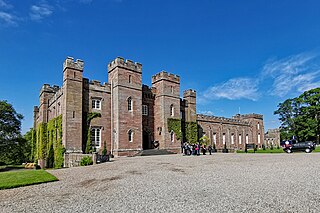
Scone is a town in Perth and Kinross, Scotland. The medieval town of Scone, which grew up around the monastery and royal residence, was abandoned in the early 19th century when the residents were removed and a new palace was built on the site by the Earl of Mansfield. Hence the modern village of Scone, and the medieval village of Old Scone, can often be distinguished.
Òran na Cloiche is a Scottish Gaelic song, written by poet Donald MacIntyre, also known as the Paisley Bard. It celebrates the return of the Stone of Destiny to Scotland, which was retrieved from Westminster Abbey on Christmas Day, 1950 by students. A fierce lifetime supporter of the nationalist cause, the bard wrote the 25 verse song in a single sitting immediately upon hearing the news of the stone's return, and some of the students involved visited him at his home to congratulate him on the song's composition in the weeks following. While Òran na Cloiche is sung to the tune of a fast reel, and is celebratory and exhilaratory in tone; upon hearing the news of the stone's return to England, the bard composed an accompanying lament, titled "Nuair Chaidh a' Chlach a Thilleadh" to express his disgust.
Gavin Harold Russell Vernon was a Scottish engineer who along with his accomplices, removed the Stone of Scone from Westminster Abbey in London on Christmas Day 1950 and took the Stone to Scotland.
Events from the year 1928 in Scotland.
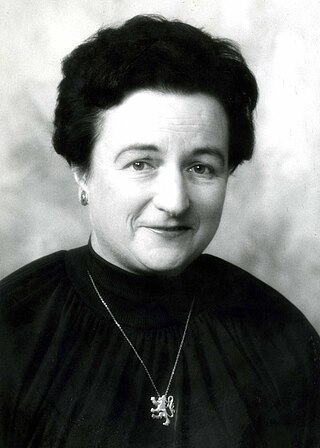
Kay Matheson was a Scottish teacher, political activist, and Gaelic scholar. She was one of the four University of Glasgow students involved in the 1950 removal of the Stone of Scone.
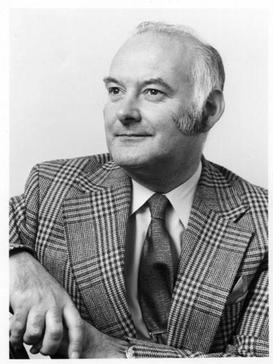
Thomas Ronald Leslie Fraser was a Scottish writer, broadcaster and Liberal Party politician. He was notable for standing as a candidate for the United Kingdom parliament, even though he was too young to be eligible to vote.
Robert Gray, often known as Bertie Gray, was a Scottish nationalist politician.

Inverasdale is a hamlet in the Northwest Highlands of Scotland, located by Loch Ewe, in the region of Wester Ross.
